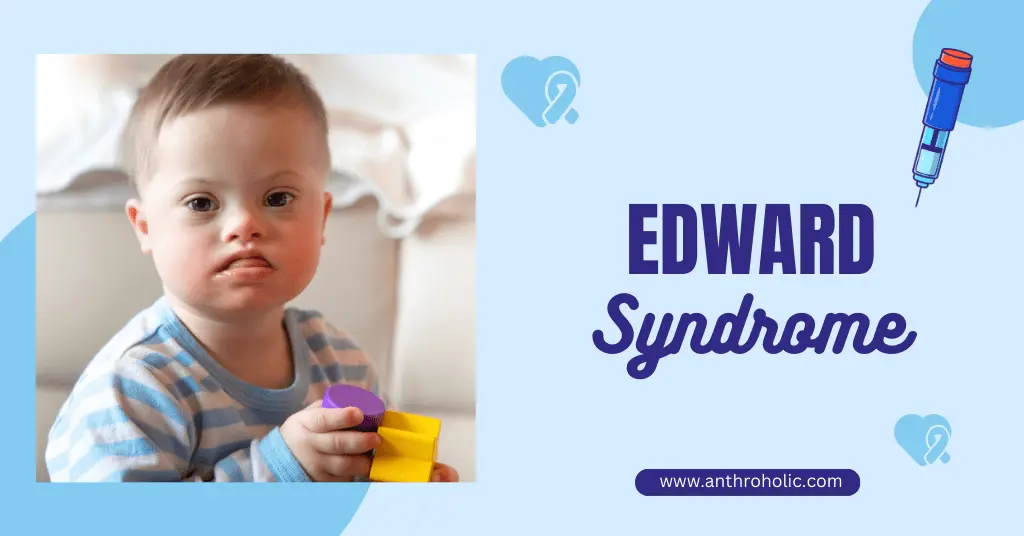Is it possible for a single genetic anomaly to shape an entire life's trajectory? Edward Bluemel Syndrome, a rare and often misunderstood condition, underscores the profound impact of genetics, leaving those affected to navigate a unique set of challenges.
Delving into the complexities of this syndrome requires a multi-faceted approach. The very term "Edward Bluemel Syndrome" itself is a call to understand the intricacies of human biology. This condition, a rare genetic disorder, presents with a range of symptoms and developmental delays, often affecting the brain and other vital organs. The medical community is continually striving to improve diagnostic accuracy, intervention strategies, and overall support systems for those impacted by the syndrome. Further exploration into the genetic origins of this condition sheds light on the fascinating science behind it.
| Category | Details |
|---|---|
| Full Name | Edward Bluemel |
| Born | May 22, 1993 |
| Nationality | British |
| Occupation | Actor, Voice Actor |
| Known For | Marcus Whitmore in "A Discovery of Witches," Richter Belmont in "Castlevania" |
| Notable Works | "The Halcyon" (2017), "The Commuter" (2018), "Sex Education" (2019), "Killing Eve" (2019), "My Lady Jane" |
For a deeper dive, visit IMDB.
Edward Bluemel, the name itself, has become associated with both the actor and, by association, the syndrome. It's a situation that highlights the human element within the complex world of genetics. His roles in various television series and films have garnered attention, but the connection between his name and the rare genetic condition adds another layer to the narrative. The unique characteristics of the syndrome and the challenges it presents demand attention from medical professionals, researchers, and the public alike.
Edward Bluemel Syndrome, or EBS, is not a single entity but a spectrum of conditions stemming from a genetic anomaly. This disorder, often characterized by a combination of physical anomalies and developmental delays, is a testament to the intricate nature of human development. The symptoms that manifest can vary, and understanding them is crucial for providing appropriate care and support. The developmental challenges are varied, impacting cognitive function, motor skills, and overall well-being. This spectrum of challenges underscores the need for personalized care plans tailored to individual needs.
The journey of those affected by Edward Bluemel Syndrome is marked by resilience and a need for comprehensive medical care. Understanding the symptoms, the physical characteristics, and the intellectual disabilities associated with the syndrome is paramount. This comprehensive understanding is essential for designing effective treatment approaches. The distinctive physical anomalies are often the first sign of the condition, including facial features and potential issues with other organs.
The emergence of Edward Bluemel Syndrome as a recognizable condition has brought both intrigue and curiosity to the medical community. The medical field is constantly evolving, with research and understanding deepening with time. The distinctive set of symptoms, from physical anomalies to developmental delays, requires careful diagnostic procedures and appropriate medical intervention. The impact on the lives of those affected and their families is undeniable, highlighting the need for early diagnosis, intervention, and support services.
The search for the underlying causes and genetic origins of the syndrome is an ongoing pursuit, with researchers continuously seeking deeper knowledge. The complexity of the syndrome necessitates advanced approaches to treatment and management. Medical professionals often seek to confirm a diagnosis by studying specific markers and symptoms associated with the condition. The goal is to develop comprehensive approaches to improve quality of life.
The connection between the actor Edward Bluemel and the syndrome is not direct, but the association serves to draw attention to the broader context. There are often the common associations between the actor and those affected by the rare genetic condition. This creates a platform to foster a more profound understanding of those often overlooked conditions. The focus is on the people who have the syndrome, the care they require, and the research that can help improve their lives.
The syndrome, which is known to affect individuals across the globe, has its origins in genetic abnormalities that occur during development. The genetic basis of the condition is complex, and understanding the factors that contribute to its manifestation is essential for diagnosis. The clinical presentation of the syndrome can vary, but the diagnostic approaches involve careful evaluation of symptoms and a battery of tests. Current management strategies involve a multidisciplinary approach to address the needs of each individual. The impact can be profound, affecting development, health, and daily life. This is often difficult for the individuals and their families.
The medical community, including researchers and healthcare professionals, has shown great interest in Edward Bluemel Syndrome. It is a rare condition with unique characteristics and implications. Individuals with this syndrome often have distinctive physical features and developmental challenges. The aim is to shine a light on often-overlooked conditions, making the path easier. The comprehensive approach to diagnosis and management aims to improve patient outcomes.
Understanding the nuances of this syndrome requires a deeper dive into its symptoms, causes, and available treatments. The physical characteristics, developmental delays, and health complications that can arise impact the daily lives of individuals. Medical professionals are constantly refining their approaches to improve outcomes and offer the most comprehensive support possible. The development of treatment options is an active area of research. Early diagnosis is crucial for effective intervention and support.
The syndrome represents a unique set of challenges, as each individuals experience is a reflection of their particular genetic makeup. It is vital to develop the understanding of the unique characteristics of each case. This requires a multi-faceted approach, including advanced diagnostic tools. The goal is to improve quality of life for those affected. Support from families, communities, and medical professionals is vital.
Early diagnosis, intervention, and ongoing support are critical components of managing the condition. The care pathways involve a team of medical professionals working together. The goal is to maximize function and quality of life. Support is vital for both individuals and their families as they navigate the challenges. Ongoing research is pivotal to improving treatment options and outcomes. This includes exploring innovative therapeutic approaches.
The challenges presented by Edward Bluemel Syndrome require compassion, knowledge, and a commitment to improving the lives of those affected. Support systems, from early intervention programs to ongoing care, are essential. The aim is to provide comprehensive care tailored to individual needs. This approach recognizes that, although the syndrome presents a consistent set of symptoms, each person's journey is unique. This requires a multidisciplinary approach to treatment, involving different types of medical experts.
The journey begins with understanding the nature of the condition. The work of researchers and healthcare professionals is critical to improving diagnostic methods and treatment options. The aim is to improve quality of life, including physical and cognitive health. The collaborative efforts of medical professionals, families, and support networks are vital to creating environments that promote well-being. The goal is to create more accessible information and support for families navigating the syndrome.


